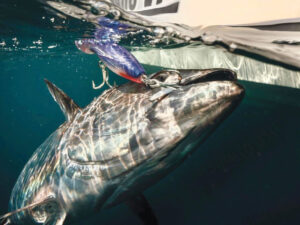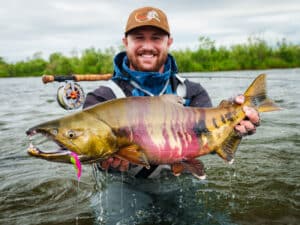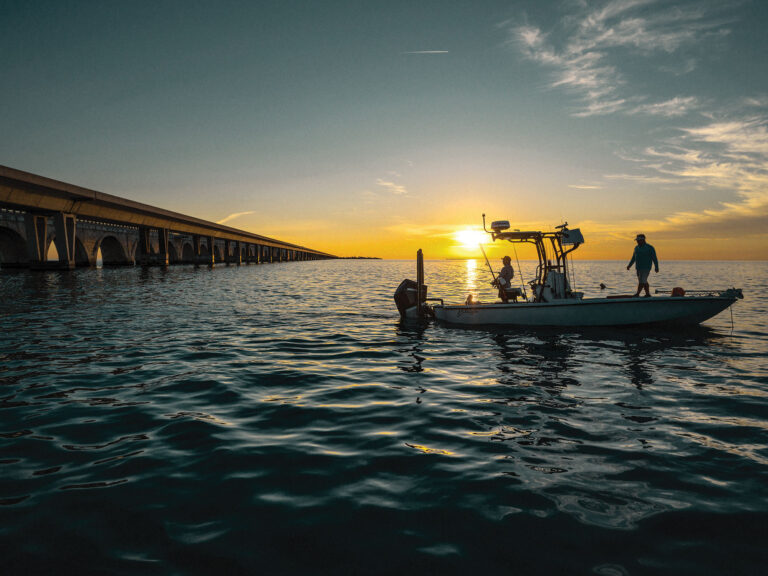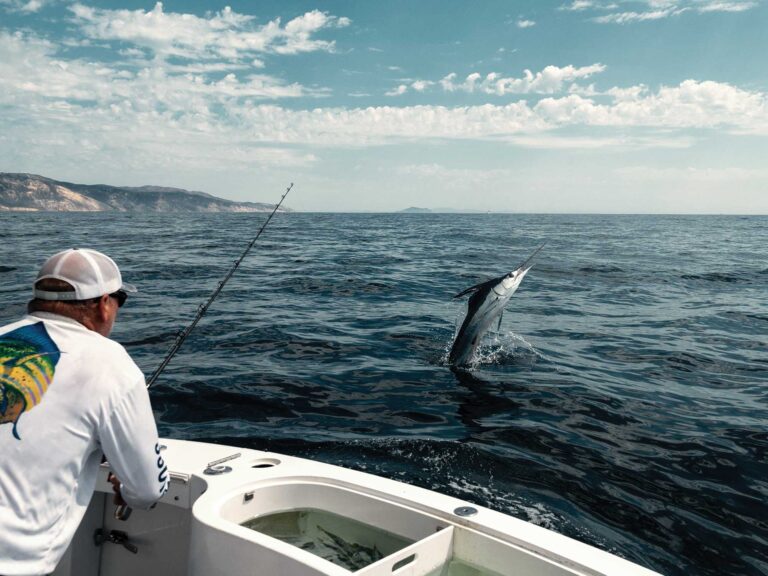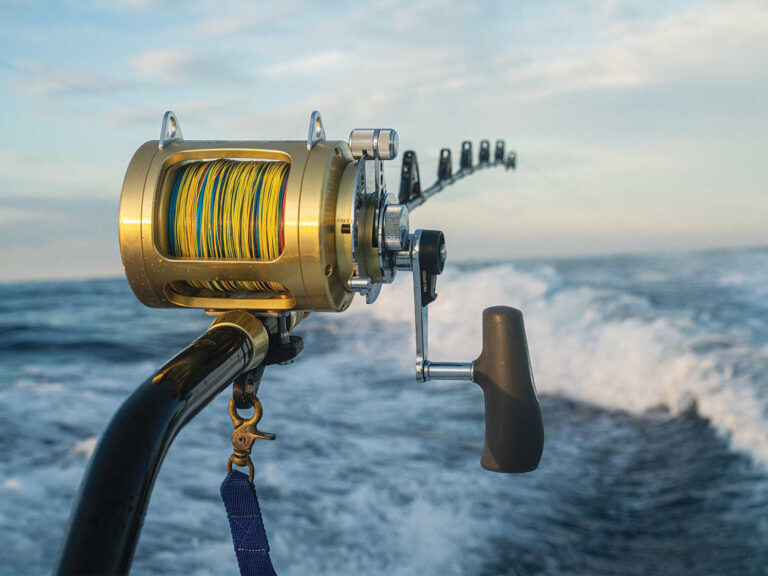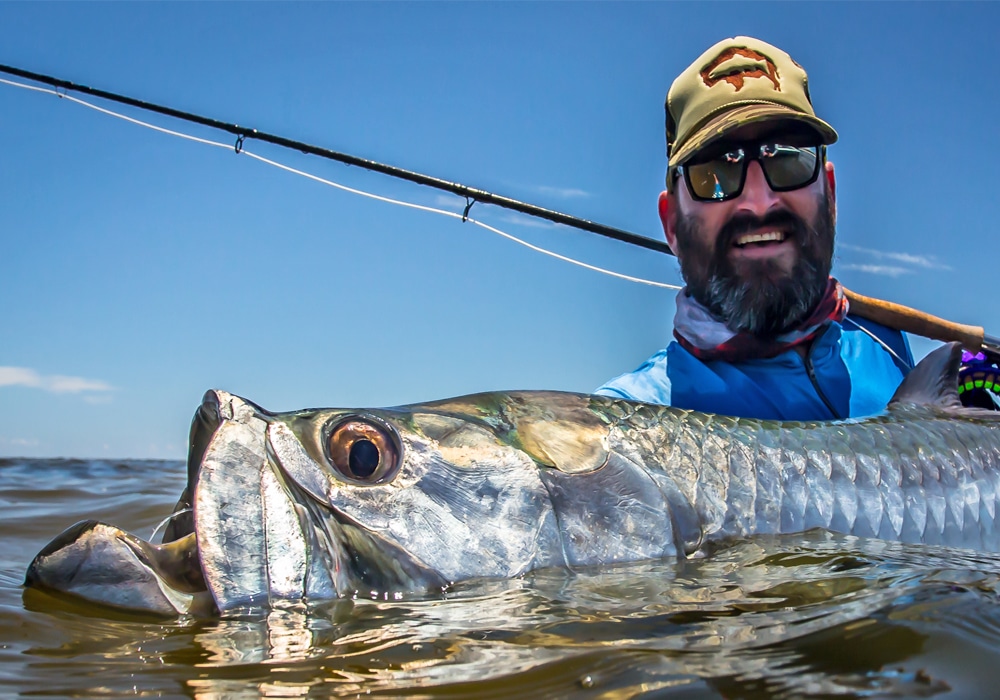
Setting up to cast at a small pack of tarpon cruising in single file or a large school swimming in “V” formation across a light-bottomed, oceanside flat has its challenges, but the degree of difficulty increases exponentially when stalking and presenting a fly to a single silver king hanging motionless, or barely moving, over grass in some secluded corner of the backcountry.
While it’s true that cruising tarpon are more preoccupied with getting from point A to point B than with feeding, at least they are active fish. And given tarpon’s opportunistic nature, they can frequently be tempted and coaxed into taking a fly, especially when traveling with other mates, which brings competition into the equation.
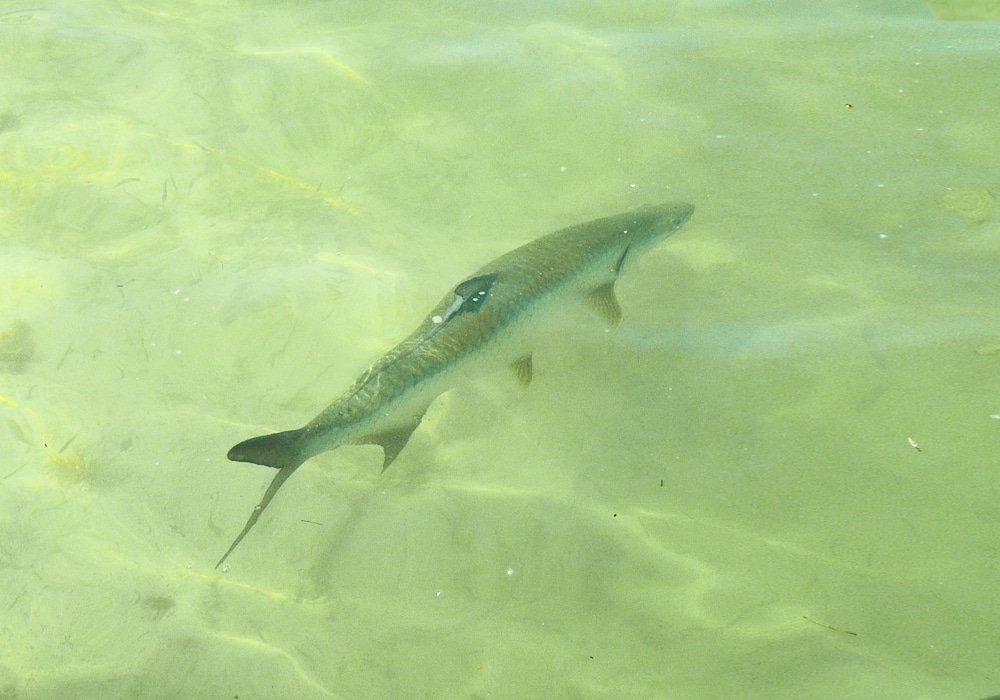
“When you cast to a pod of tarpon, you often see two or more separate from the rest, and it’s a race to the fly,” says Fabian Guerrero, a Southwest Florida tarpon addict.
That, of course, is not the case when it’s laid-up tarpon one is after. Then we’re usually dealing with a single fish, one that is either taking a moment for much needed rest before continuing its journey to parts unknown, or waiting for the right tidal stage to reach a desired hangout or feeding station.
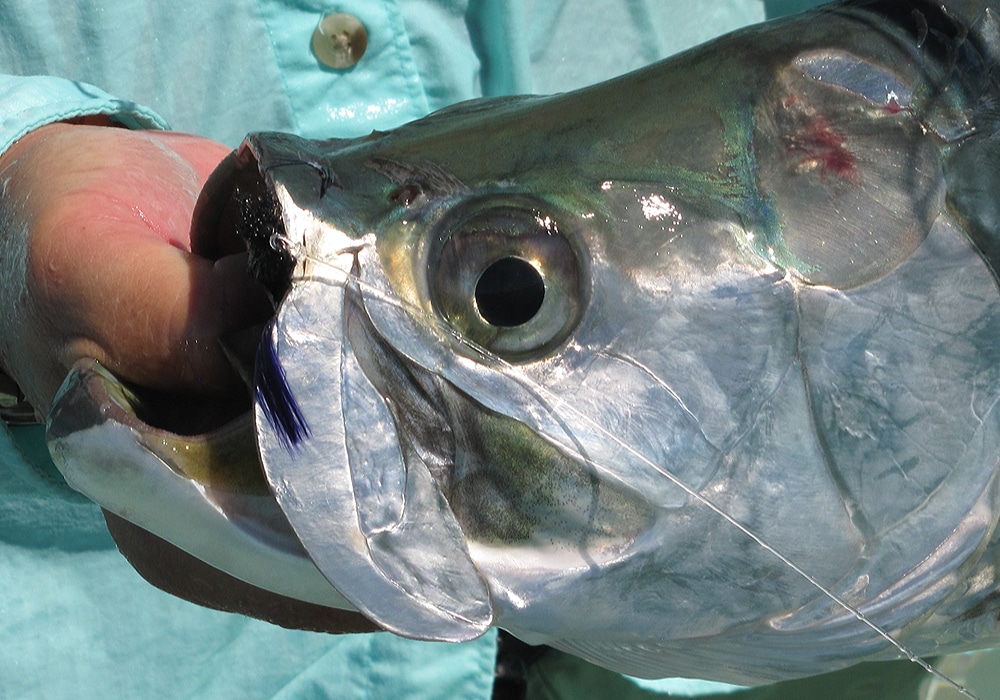
Understanding the Target
For the most part, laid-up tarpon are passive, often appearing apathetic, even lethargic. But countless tales of success have taught us that these fish are susceptible to the right techniques.
Stealth, always essential when targeting tarpon, climbs to a higher level of importance when stalking laid-up fish. So does casting accuracy, as the strike zone shrinks considerably with a motionless target and the single pair of eyes.
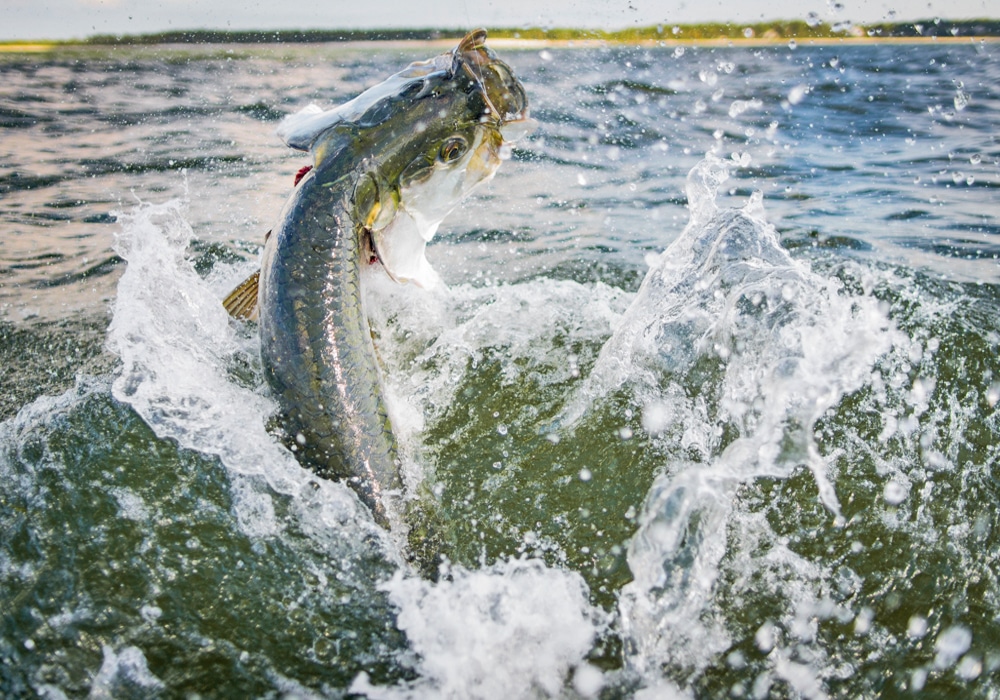
Silent Approach
Tarpon tend to lay up in secluded areas, usually away from boat traffic and heavy fishing pressure. Shoreline points and troughs, pot holes in the middle of a flat, and sometimes inside the mouth of coastal creeks, are among their favorite spots to take a load off, seemingly safe from imminent danger.
Quiet reigns in such places, so it behooves anglers to adopt the stealthiest possible approach to remain undetected while searching for and closing in on laid-up silver kings. Hull slap, the hum of a trolling motor, a hatch shut at the wrong moment, the foot of the push pole crunching oysters or bouncing on rock, and sometimes conversation above whisper volume could alert a laid-up fish of your presence, snap it out of its dormant state, and reactivate its full complement of sensors tasked with self preservation.
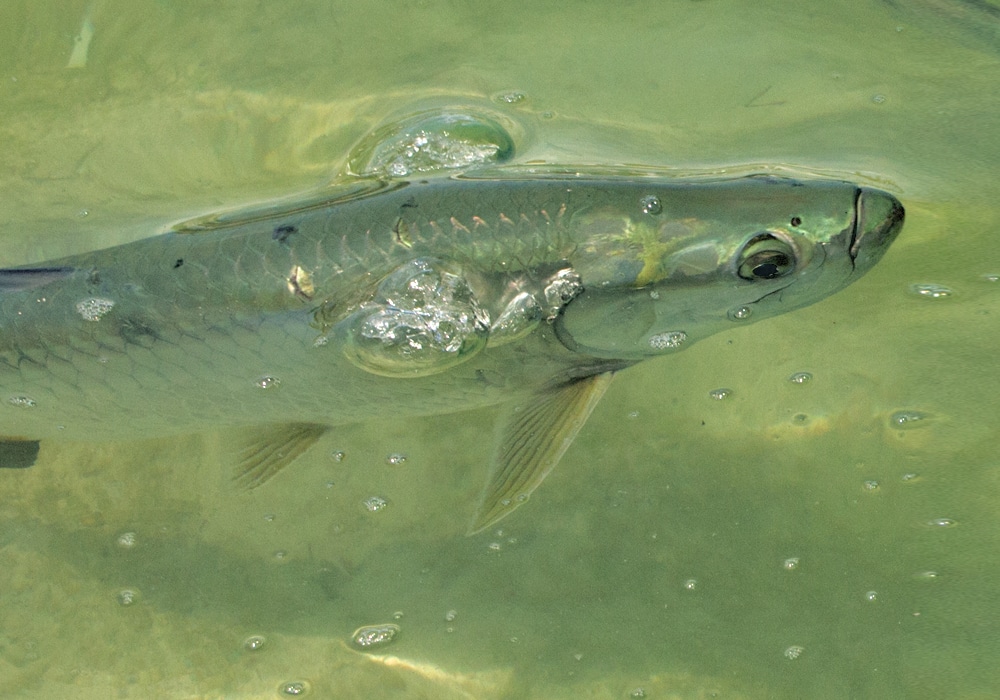
Hide and Seek
Some laid-up tarpon will rise to the surface occasionally and gulp air, but many won’t, so don’t count on this telltale sign. And, considering the odds of locating some over light sand — in the backcountry — during sunny conditions are not high, you shouldn’t expect to spot their shadows either. The tip of a caudal fin or dorsal briefly breaking the surface will give away the presence of a few. By and large, however, finding laid-up tarpon demands we train our eyes to distinguish large shapes suspended in mid water, often one to three feet down, even when the drink is cloudy or murky.
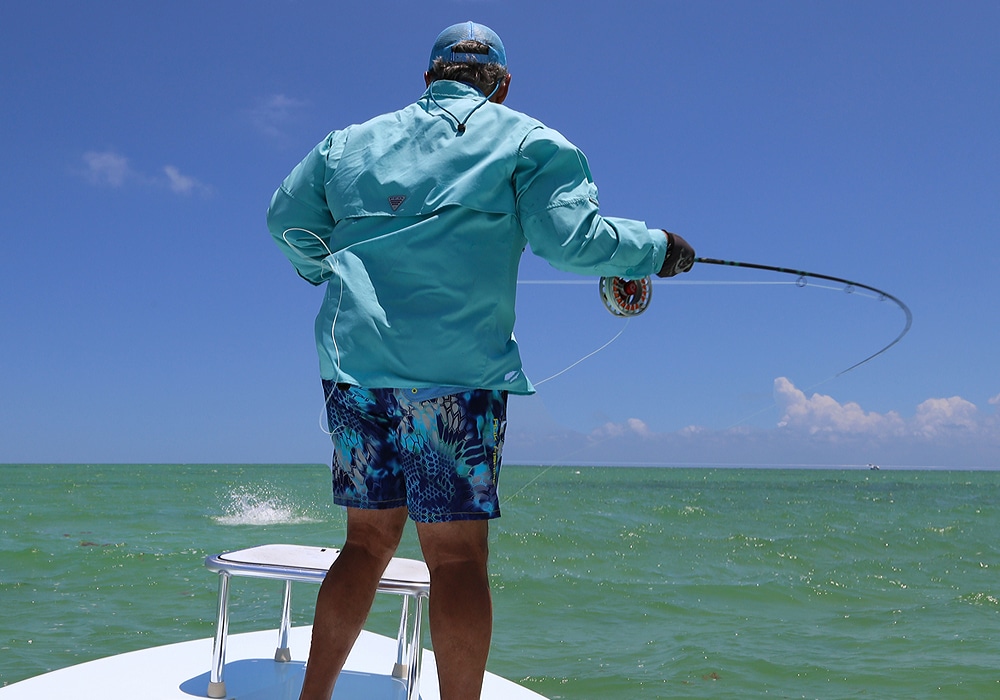
Pinpoint Presentation
Determining the direction in which a laid-up tarpon is facing is paramount, for that enables the angler to conclude the proper angle of approach and the precise location of the strike zone, the radius of which varies based on water clarity and calmness, and on whether the tarpon is staying put, or slowly advancing or turning.
If ever there was a game of inches, this is it. Rarely will a laid-up tarpon make a drastic move, be it a pronounced turn or sudden acceleration, to eat a fly that lands several feet away. Despite their inertia, these fish are still endowed with finely-tuned sensory perception and huge eyes that the smallest of details hardly escape. Therefore, the aim should be to serve the fly — with a smooth delivery that won’t rock the boat, and the softest possible landing —on an imaginary, 24-inch plate that extends forward from the tarpon’s nose. Next, pick up any slack line right away by stripping long and steady until you gain control of the offering, then you can minimize stripping speed and length to impart action to the fly as needed, based on the tarpon’s reactions.
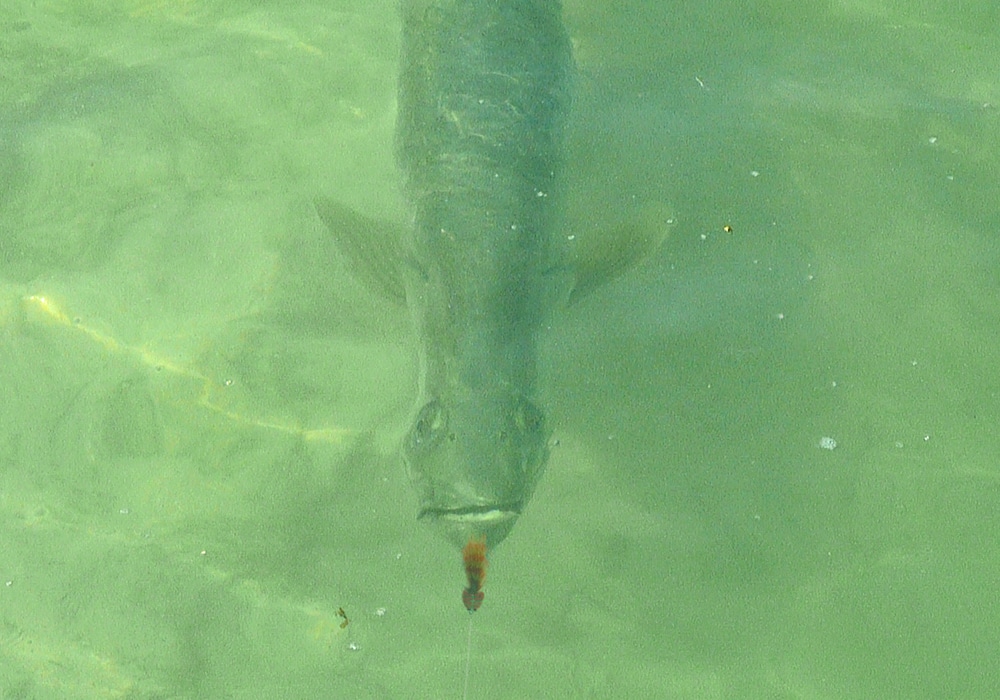
Action and Reaction
When working a fly in such close proximity to the target, slight twitches and the intervals between them make a difference. I like to strip just enough line to get the fly moving and gauge the fish’s initial response. If it turn slightly away, you’ve gotta proceed with caution and move the fly slowly and only as much as required to keep it at the tarpon’s eye level or slightly above.
Should the fish appear curious of your faux crustacean or baitfish, strip a couple of inches, stop for second, and then repeat the process to see if the fish inches toward the fly for a closer inspection. If the tarpon likes what it sees, it will track the fly, so continue that same strip-and-stop cadence in hopes it will commit.
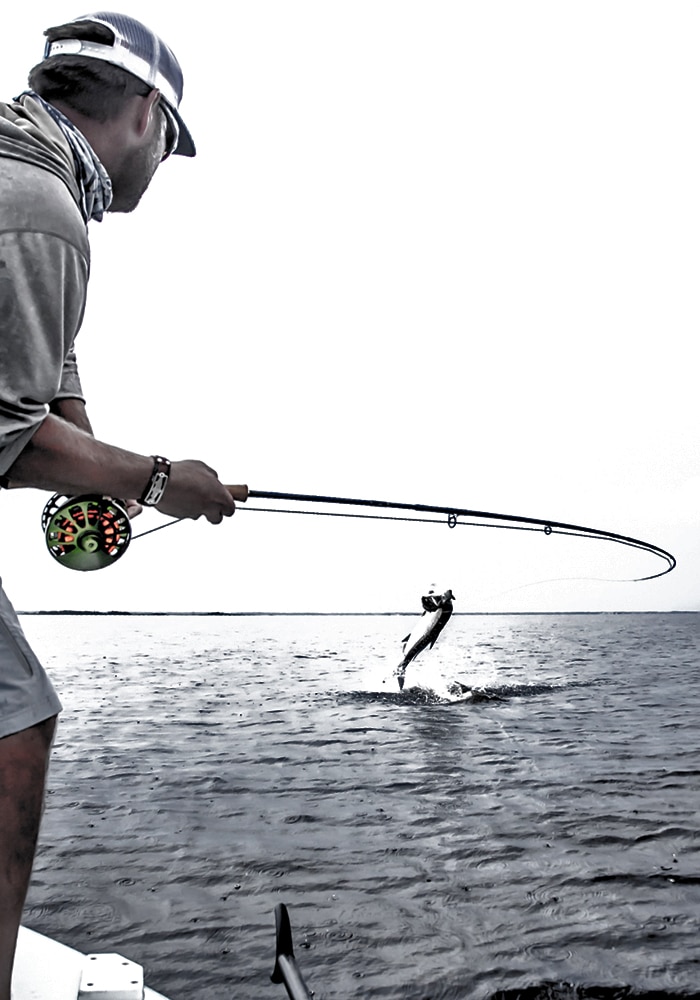
Once a fish starts tracking the fly, assess its level of enthusiasm by speeding up the stripping a bit, while still taking in only a couple of inches of line at a time. At this point, the tarpon will either close in and slurp, or put on the breaks, a clear tell that it has grown suspicious. If its reaction is the latter, stop to let the fly sink a few inches, mimicking an injured or tired prey, before resuming the initial, slower-paced stripping cadence to instill confidence on your quarry.
In the event the tarpon refuses to engage again, you’re better off picking up the line and making a new presentation, taking the fish’s previous reactions into account to avoid whichever move it didn’t like. If the silver king gets a close look or tracks the fly a few feet, but then stops and turns away from it, even if it doesn’t leave the scene, give the fish a moment before your second attempt. If it does that again, or completely ignores your next presentation, change the fly. You’re not likely to get many more tries before the tarpon finally realizes it’s being duped, so consider giving it some space to let it feel at ease before taking a shot with a different pattern.
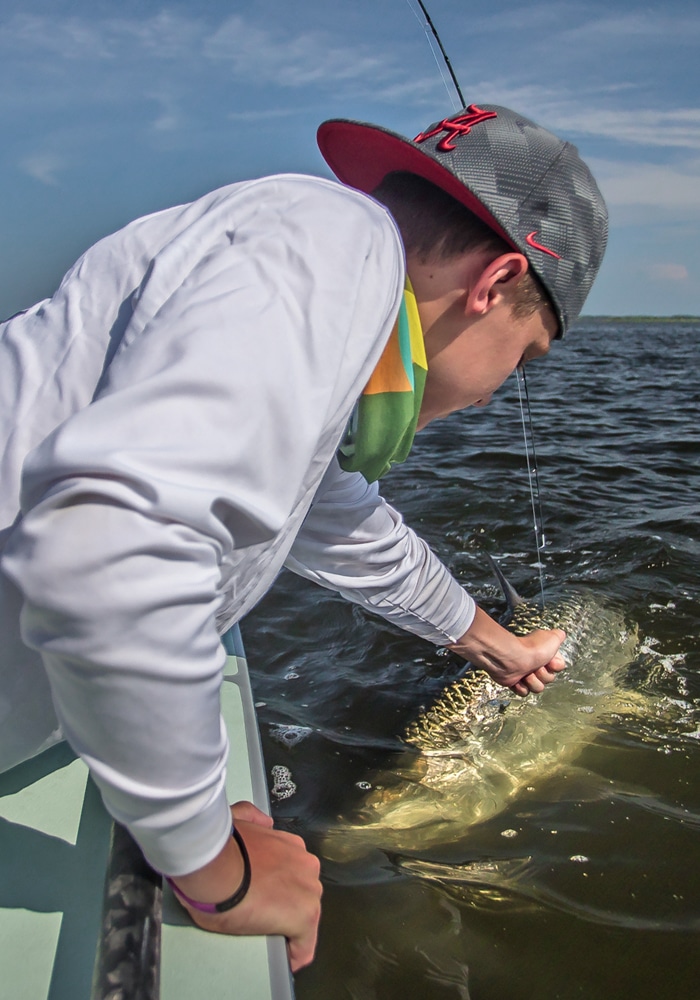
Seductive Patterns
Flies tied with marabou or zonker (rabbit) strips, which breathe and pulsate in the water with minimal stripping, are ideal for targeting laid-up tarpon. Keep them under three inches in length so they appear less threatening, and opt for a lighter wire hook, no bigger than size 2/0, so the flies land softly and don’t sink fast.
In my opinion, crustacean patterns do better for laid-up fish and, while I like natural colors that blend with the bottom and look like they belong in the spot you’re fishing, I also like my flies to have a bit of chartreuse or orange for contrast. If nothing else, that makes it easier for the angler to see the fly, a basic necessity for the game of cat and mouse we must play to spark interest in unmotivated tarpon and coax them into action.
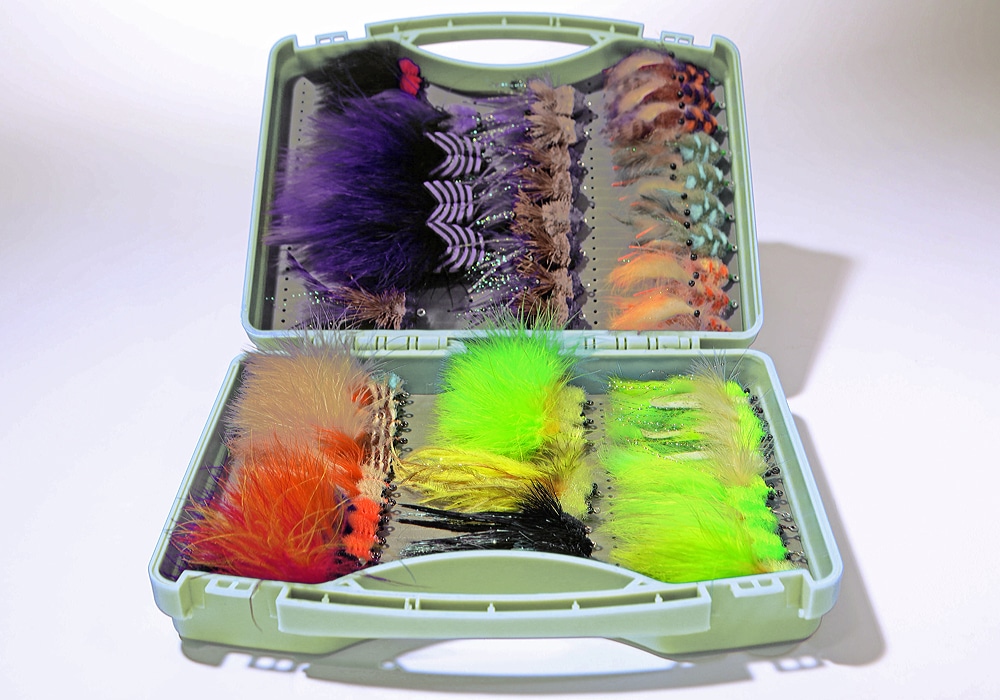
Flies, Leaders and Tackle
I favor impressionistic fly patterns over realistic ones, but I’m a big fan of mono or nylon dumbbell eyes on my shrimp and crab flies for laid-up tarpon. My favorites include the Hoover Marabou-Tail Toad, EP Tarpon Crab, Ruoff Laid-up Tarpon fly, Dickey Tarpon Muddler, Tarpon Mouse (a nylon-eyes version of the classic Tarpon Slider), and a spin-off of the time-honored Cockroach that I tie with deer hair for the collar to add buoyancy.
Don’t make your leaders so long — for the sake of stealth — that they won’t turn over the fly without you muscling the cast. I keep mine at 10 feet, but scale down the shock (bite) tippet to 50-pound fluorocarbon, or even 40-pound if the water is clear and the sun is out. And leave that 12-weight outfit in the rod rack, use a 10- or 11-weight instead. You won’t be making long casts, and a lighter fly line is more conducive to delicate fly presentations.

